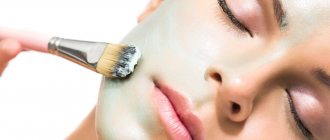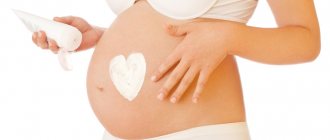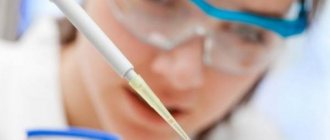- How does cold allergy manifest?
- Allergy to cold: how to choose treatment?
- Heat urticaria: what is it?
- Heat allergy: what is the most effective treatment?
- How to overcome hives?
- The advantages of using such drugs are obvious
Can you be allergic to heat or cold?
Yes, this disease is quite common. A concomitant factor in the development of urticaria is high capillary permeability. Allergies have many forms - this is a known fact. One of the manifestations of an allergic reaction to cold or heat are two forms of urticaria - cold and heat. Cold weather occurs as a response to low temperature. And thermal energy develops in response to high temperatures.
Both forms of urticaria can be acute (lasting up to 6 weeks) or chronic (lasting more than 6 weeks). Also, cold and heat urticaria can be:
- localized (appears on a specific area of the body - it could be the hands, face, eyes);
- generalized (appears throughout the body without a general deterioration in the patient’s condition);
- generalized with deterioration of the condition (weakness, low blood pressure are observed).
Temperature urticaria, or allergies to cold or heat, manifests itself almost equally in both adults and children. Characteristic symptoms are redness of the skin and itching.
How does cold allergy manifest?
A person can acquire this form of allergy either by inheritance or during life. Acquired cold urticaria may appear in adolescence and completely disappear by the age of 20-25. But it also happens that the disease occurs in adult women over 30 years of age and occurs in an acute form.
To diagnose an allergic reaction (urticaria) to cold, you will have to do special temperature tests: apply an ice cube to the skin of the forearm for 2-4 minutes. And then evaluate the results within 15-20 minutes:
- if blisters, swelling and redness appear within 10 minutes, this is primary/secondary cold urticaria;
- all similar symptoms appeared only after 20-30 minutes - this is an apathetic allergy to cold;
- if there is no reaction, but a rash appears on the skin area, this is reflex cold urticaria.
Causes and symptoms of prickly heat
Heat rash usually occurs when your skin becomes overheated and too wet, for example if you wear clothes that are too tight or are in a particularly hot and humid climate. Heat rash in newborns and infants often occurs when swaddling is too tight or low-quality diapers are used. This leads to one of the main differences between prickly heat and allergies - the limited localization of the rash. Typically, the symptoms of this disease appear locally - where clothing hides the skin, on the elbows or knees, in the area of skin or fat folds, under the hair. Allergy can affect both small areas of the skin and the entire surface of the body, since it is a systemic reaction of the body. In addition, the development of heat rash is often preceded by skin irritation - for example, friction from a tight collar or scarf.
The symptoms of the two diseases are very similar: the appearance of a small papular and/or vesicular rash. Most often, the affected skin turns red and swollen, becomes sensitive and irritated.
Allergy to cold: how to choose treatment?
Cold urticaria is the body's reaction to low temperatures. It is necessary to exclude this provoking factor - and everything will work out. Here's what you need for this:
- spend less time in the cold and cover exposed areas of the body;
- avoid washing with cold water and cold food;
- use special protective cosmetics;
- take antihistamines;
- properly temper the body.
Allergy to cold has similar symptoms in children and adults, so it is important to choose a drug in advance that is suitable for the whole family and will quickly eliminate the allergic reaction.
Who is more susceptible to heat urticaria?
According to research, the most affected are:
- Children under 10-12 years old. This is due to the peculiarities of the immune system and the biological development of the body.
- Patients with chronic allergies. The more severe the immune response and the more frequent the allergy episodes, the more likely it is to develop heat dermatitis. Then, for the same reasons, relapses occur. After another attack of bronchial asthma or Quincke's edema, you need to stay away from heat sources.
- Pregnant women. Due to increased sensitivity of the body.
- Elderly people due to weak immunity.
- Persons born in cold climate zones. The reason is the body’s low adaptability to high temperatures.
Also, according to unproven data, there is a connection between the thermal reaction and the following factors:
- Smoking.
- Consumption of alcohol, psychoactive substances.
- Physical inactivity.
Trigger factors (start another relapse):
- Taking a hot shower or bath.
- Being in a bathhouse, sauna.
- Eating spicy foods, which leads to dilation of peripheral blood vessels.
- Emotional overload.
- Colds, infectious diseases.
- Physical overload.
- Disorders of the digestive system and thyroid gland in the acute phase.
- Episodes of neurological diseases, brain injuries with the development of autonomic dysfunction.
Heat urticaria: what is it?
Heat urticaria is an itchy rash (blisters) that occurs when the skin is exposed to high temperatures. The presence of this form of allergy can be determined using special tests. But there are more accessible and simpler diagnostic methods.
For example, it is enough to apply a hot object to the skin of the forearm for only 5-7 minutes. If redness, itching or swelling appears on the skin within 15-20 minutes, the diagnosis of “heat urticaria” can be considered confirmed. In children and adults, this allergic reaction may also occur in the form of fever.
Rash due to infectious diseases
A rash in infectious diseases is accompanied by enlarged lymph nodes, weakness, fatigue, nausea and diarrhea, and high fever. The shape and location of the rash depends on the type of infection that caused the rash.
Diseases accompanied by skin rashes:
- Measles. Rashes in the form of papules appear on the 3-4th day behind the ears, in the area of the bridge of the nose. And very quickly the rash spreads to the entire face. Then it moves to the upper back, chest, and lastly to the feet and hands.
- Rubella. The rash is small-spotted, pale pink. Localized on the skin of the buttocks in the bends of the elbows and knees. On the second day it covers the surface of the body and limbs.
- Scarlet fever. The rash is continuous in the form of redness from red dots. At first the rash is bright, then fades and then turns brownish. First the face is covered, then the neck, chest, and upper back. And then - on the thighs and forearms.
- Chicken pox. A very contagious disease with the appearance of vesicles on the scalp, in the groin area, and throughout the body, except the palms and feet.
- Herpes. The rash is small with liquid inside. Very painful. It is most often formed on the mucous membranes of the lips, nose, and genitals. Accompanied by itching and burning.
There are many other infectious diseases with rashes on the body. Among them are meningitis, mononucleosis, pneumonia. The disease occurs with obvious symptoms of general intoxication of the body.
Methods for diagnosing skin diseases:
- Diagnosis of skin diseases
- Diagnosis of skin diseases at home
- Diagnosis of allergic skin diseases
- Diagnosis of bacterial skin diseases
- Diagnosis of viral skin diseases
- Diagnosis of hair diseases
- Diagnosis of nail diseases
- Diagnosis of skin tumors
- Skin scraping
- Blisters on the skin
- Dermatoscopy
- Demodex tests
- Diagnosis of sexually transmitted infections
- Mushroom tests
- Skin scraping
Heat allergy: what is the most effective treatment?
To quickly improve the condition of heat urticaria, you will need:
- follow a diet - avoid spicy, salty and too hot dishes, as well as fast food;
- dress correctly – choose clothes and shoes made from natural, “breathable” materials; avoid long walks in the hot season and protect your skin from direct sunlight;
- regularly use protective creams for the skin of the face, neck, hands and other exposed parts of the body;
- use antihistamines that will quickly get rid of the disease.
Symptoms of Heat Allergy
Signs of the disease vary from patient to patient. The full clinical picture includes:
- Formation of small pink papules (2-3 mm) on the skin. Over time, the lesions merge together, forming affected areas.
- Itching, burning at the site of the rash.
- Pain syndrome. The place involved in the process cannot be touched.
- Trouble sleeping due to severe discomfort.
The main symptoms occur a few minutes after the body is exposed to a trigger, such as a hot shower. The course of the pathological process is observed for 3-7 days, plus or minus a few days. In the subacute period, the papules open and the contents spill onto the skin. When scratching, secondary infection, suppuration, and the formation of local areas of necrosis are possible. This results in severe scarring and the appearance of cosmetic defects. With weakened immunity, phlegmon is possible - an abscess in fatty tissue (extremely rare).
Thermal urticaria occurs in two forms: classical or local and cholinergic. The difference between them is minimal. The clinical picture is identical (the second form is also characterized by general symptoms: nausea, vomiting, fever, weakness). With the cholinergic variety, the intensity of the symptoms is higher, the duration of each episode is several days longer. The prognosis for recovery for this type is worse.
Heat rash in children occurs mainly in the classical form. The acquired process is either one or the other.
How to overcome hives?
First of all, you should remember about prevention. Preventing an allergy to cold or heat is much easier than trying to eliminate all the symptoms. And if the disease has already made itself felt, it is important to choose the right antihistamine, which has a double effect:
- Blocks H1 receptors. It is histamine, a substance that causes an allergic reaction, that usually binds to them. As a result, allergies to cold or heat simply do not develop.
- Accelerates the destruction of histamine, which provokes the development of one form or another of urticaria in adults and children.
Clinical researches
Clinical studies have proven the effectiveness, safety and tolerability of the products. The products are suitable for daily care of children's skin with mild to moderate forms of atopic dermatitis and during remission, accompanied by a decrease in the quality of life of patients.
Sources:
- Sukolin Gennady Ivanovich, Clinical dermatology. A short guide to the diagnosis and treatment of dermatoses, publishing house: Notabene, 2017
- Pankratov Valentin Gavrilovich, Pankratov Oleg Valentinovich, Infectious dermatology in the practice of primary care physicians, New Knowledge Publishing House, 2015
- Mancini A. J., Krouchuk D. P., Pediatric dermatology. Publisher: Practical Medicine, Directory, 2018
- Kildiyarova Rita Rafgatovna, Pediatrician for every day. Guide for doctors, publishing house GEOTAR-Media, 2022.
Photos of heat rash
Photo album on the disease
Prevention
Preventive measures against heat allergies are:
- Quitting smoking, alcohol, and psychoactive substances (not counting antipsychotic drugs, therapy adjustments are carried out by the attending physician).
- Correction of daily temperature conditions: purchasing an air conditioner, heating water no more than an acceptable level, refusing to walk during the hours of maximum solar activity.
- Refusal of spicy foods, seasonings, spices.
- Normalization of physical activity regime. Changing the nature of professional activity if possible - if mechanical work takes place.
- Preventative examinations with a therapist.
- Treatment of allergies, avoiding contact with hazardous substances to which there is a proven or suspected reaction.
Heat urticaria in children
It proceeds, as already mentioned, in a classical local form. The occurrence of the cholinergic variety is uncharacteristic; the frequency of such cases is no more than 15-20% of the total.
Symptoms of general intoxication, fever even at a low level are grounds for hospitalization in order to avoid complications.
Allergies to temperature in children are the most common, which is associated with the process of formation of the immune system. But this is not the norm; treatment is needed.
Conclusion
Heat urticaria is a type of complex immune response. Eliminated under the supervision of an immunologist-allergist. To avoid dangerous consequences, you should consult a doctor at the first manifestation of the disease. If complications develop, you need to call an ambulance. The treatment prognosis is favorable. The ability to change habits and living conditions plays a big role in determining the future quality of life.
Also read an article on our website about why allergic reactions are accompanied by fever.
Author of the article: Artem Shimansky, practicing physician. Graduated from Saratov Medical University. Since 2008 he has been practicing in Wroclaw (Poland). Specialization: urologist-andrologist.
Possible complications
The list of consequences of a thermal reaction is relatively short:
- Quincke's edema, bronchospasm, anaphylactic shock, asphyxia and death. Strictly speaking, this list is not considered a consequence of thermal urticaria; it is caused by the underlying allergic process. However, the risk is higher against its background.
- Infection of wound surfaces due to scratching. Up to the formation of deep abscesses and phlegmon.
- Swelling of the respiratory tract.
To avoid such consequences, if general symptoms occur, hospitalization in a therapeutic or pulmonology hospital is indicated. The issue is decided at the discretion of the paramedic. It is recommended to call emergency medical assistance.









